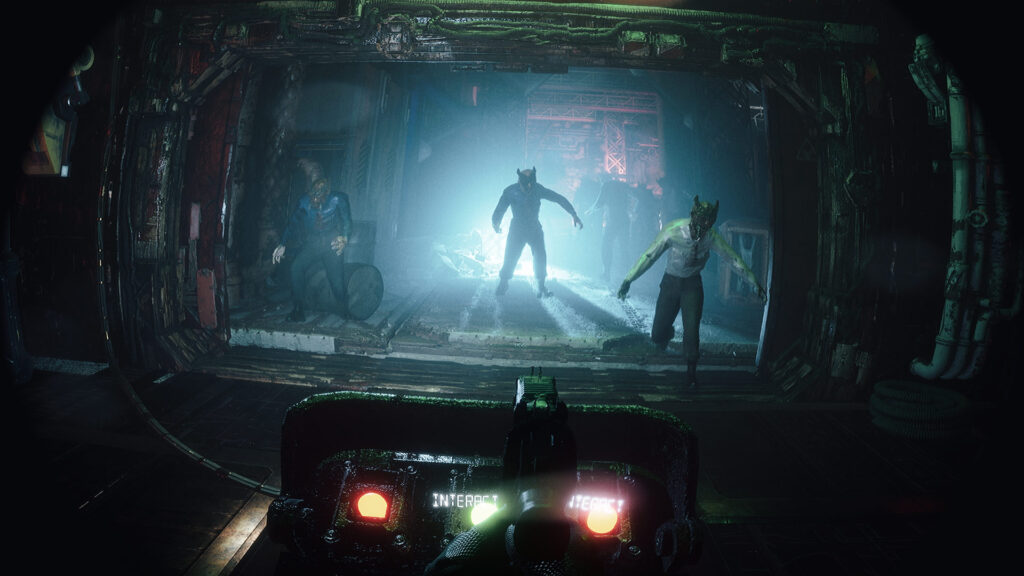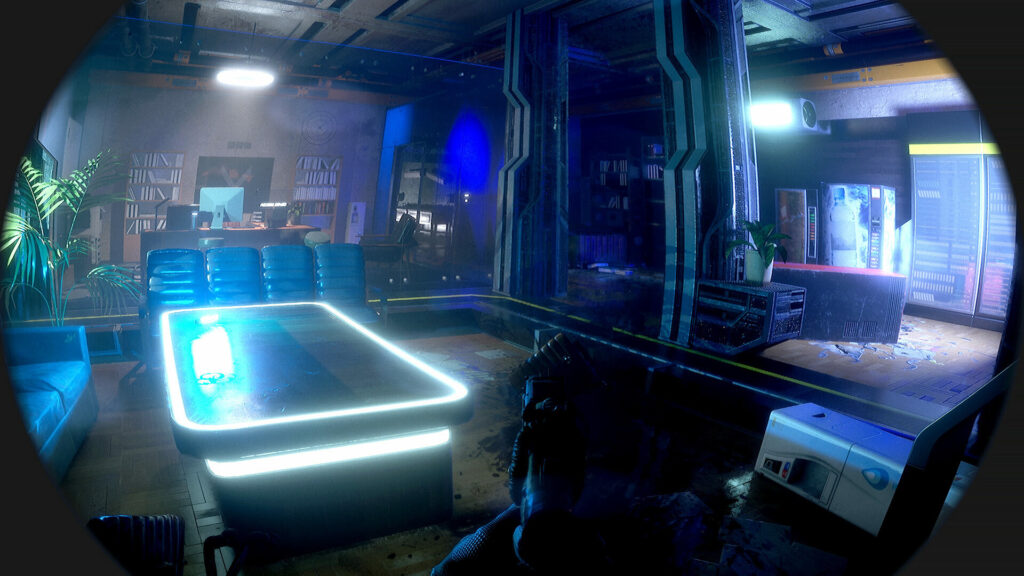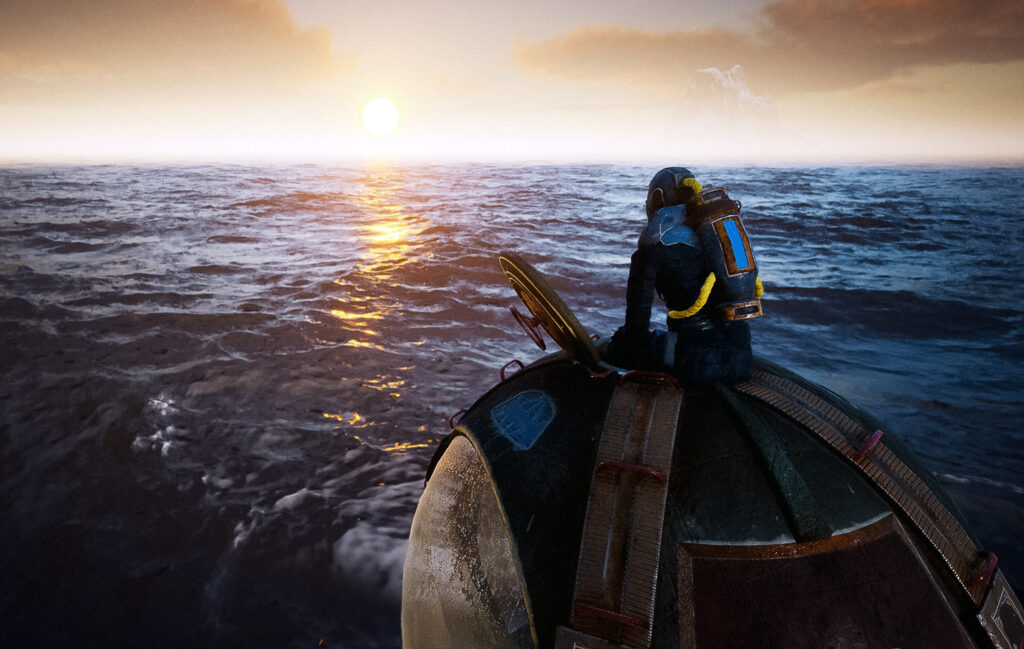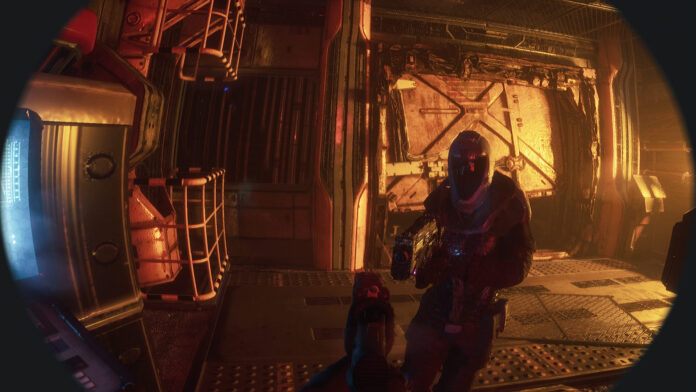Brothers Bobby and Zhanko Mojsovski, working under the name of MystiveDev, have just released the bodycam survival-horror shooter Chasmal Fear. Leading up to the release, they launched a six-part YouTube series discussing the game’s development and the inspiration behind its subject. It’s an interesting watch. Below the video is the article based on the interview we published earlier (January 2024) on this site.
Based in the city of Ohrid in North Macedonia, the two brothers Bobby and Zhanko Mojsovski work hard on their next game, the bodycam survival-horror shooter Chasmal Fear. Working under the name of MystiveDev the Mojsovski-brothers actively include the player community in almost every aspect of development. “Our games are made for the players. They know what’s good and what needs to be improved, so we listen to them.”
“My brother and I have been working together on video games for little more than 14 years now, both on our own games and games for clients as freelancers. We both share the same responsibilities and brainstorm ideas together based on previous data and research on the market. My brother Zhanko does the programming part, while my stronger side is 3D art and level design”, explains Bobby Mojsovski. The collaboration extends to game mechanics and gameplay loops, where player feedback plays a crucial role in shaping the final product.
The inspiration for Chasmal Fear arose from a desire to explore uncharted territories within the increasingly popular genre of Bodycam games. “We noticed that most bodycam games were either hyper-realistic shooters or found-footage games. That’s when we asked ourselves what it would be like to create a bodycam sci-fi survival horror.” A shared fear of the unknown, particularly the depths beneath the waves, became a driving force behind the creation of the game’s setting, an underwater facility.
Mutated creatures
Delving into the design of the game’s world and enemy creatures, the brothers drew inspiration from iconic titles such as Doom 3, Dead Space, and Alien: Isolation. The dark sci-fi setting combined with mutated creatures creates a chilling atmosphere. “Most of the creatures you see are mutants. As we are still in early alpha, that may change in the future though. To avoid spoilers, we can say that something caused the humans and the environment around the facility to mutate into weird, monstrous forms”, reveals Mojsovski.

A standout feature of Chasmal Fear is the multiple player choices system and randomized events. “The Multiple player-choices allow us to provide lots of replayability since there will be many moments in the game where players will have to make a choice that affects their playthrough”, says Mojsovski. “So, when a player comes to a ‘choice point’ with, for example, three buttons, they may click only one that opens a certain path and locks the other sections. They will then not see that part of the facility during this playthrough. Some parts may require stealth play, while going through other paths you might need to dive guns blazing.”
Compelling gameplay loop
Balancing the creation of assets, the Mojsovski brothers share that the assets are a mix of marketplace acquisitions and in-house development. “I say it’s 50/50. The levels in Chasmal Fear are not procedurally built. Everything is hand-crafted. For the more generic things like walls, some doors, floors, chairs and such, we use Marketplace Assets that we retouch or retexture to fit the style. The more important models such as the player character, the main story items, all of the monsters and some of the gadgets are done by us.”

The creative process for Chasmal Fear took a different route than their past games Mirror Forge and Alan Sharp, with a focus on establishing gameplay mechanics before delving into the narrative. “After we had the main gameplay features and ‘hooks’ of the game written down to the last detail in a design document, it was then that we began writing the story,” Mojsovski shares. This approach allowed them to create a compelling gameplay loop and build a captivating story around it.
Crucial animations
Reflecting on challenges faced during development, Bobby acknowledges that animation proved to be a formidable task. “Due to the style of the game, we need to create polished, believable animations that look good on the screen.” Their solution involved dedicating more time to crucial animations and enlisting the expertise of a freelance animator to ensure the results they want.

The biggest lesson learned during the development of Chasmal Fear echoes a sentiment shared by many successful developers: always listen to the player community. “Talk with the players and do lots of playtesting. Then, analyze their feedback. We love making games, but those games are made for the players. In the end they know what’s good and what needs to be improved,” concludes Mojsovski.
Chasmal Fear is out now on Steam.

